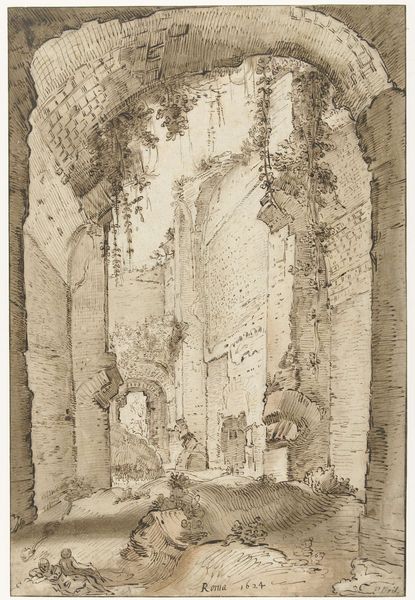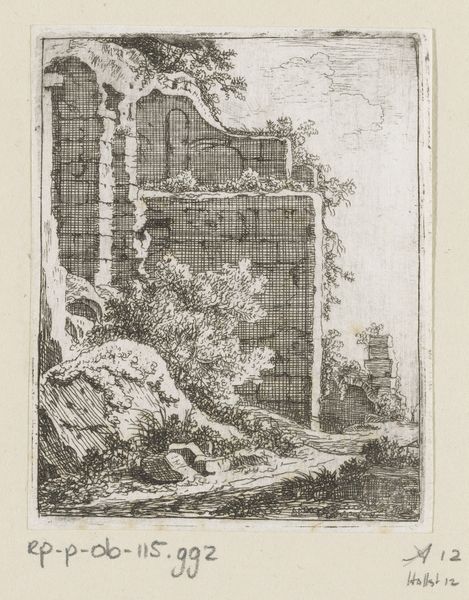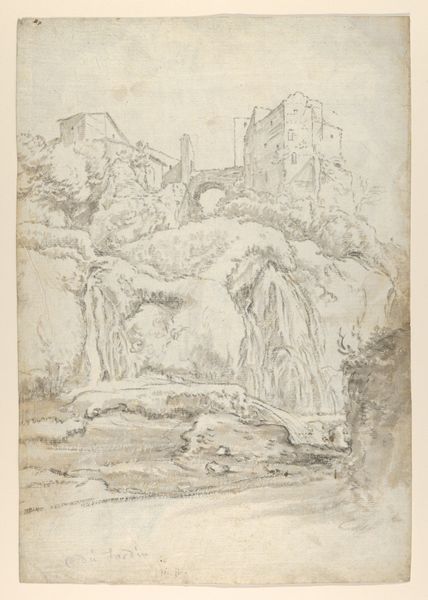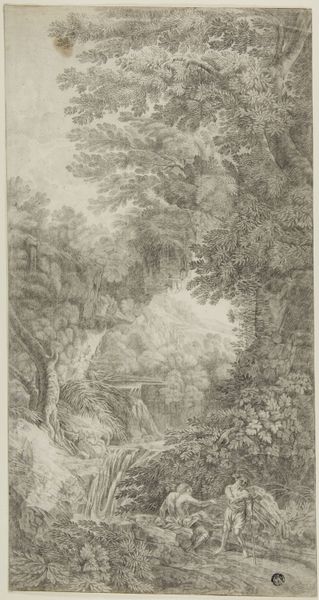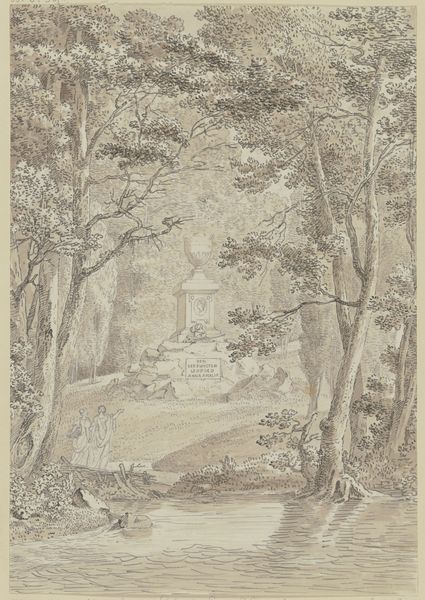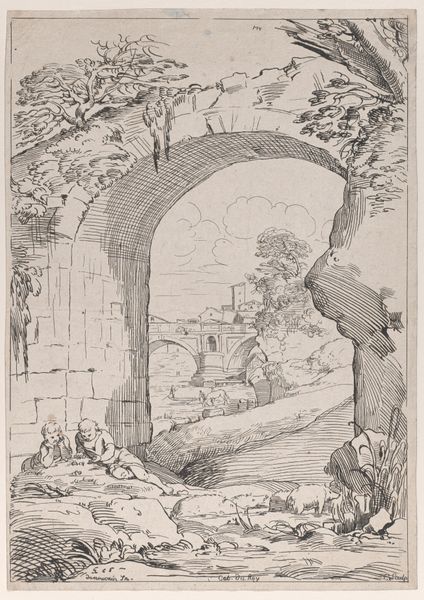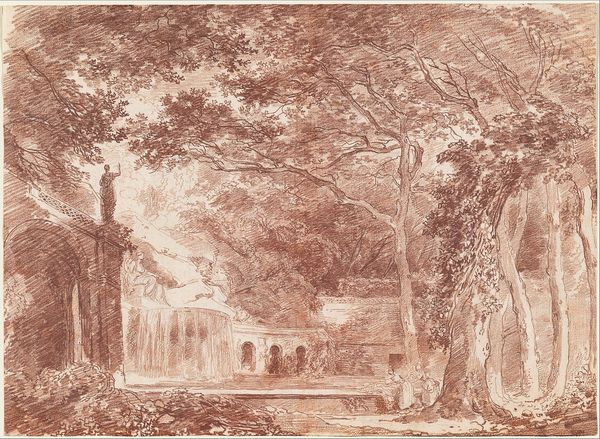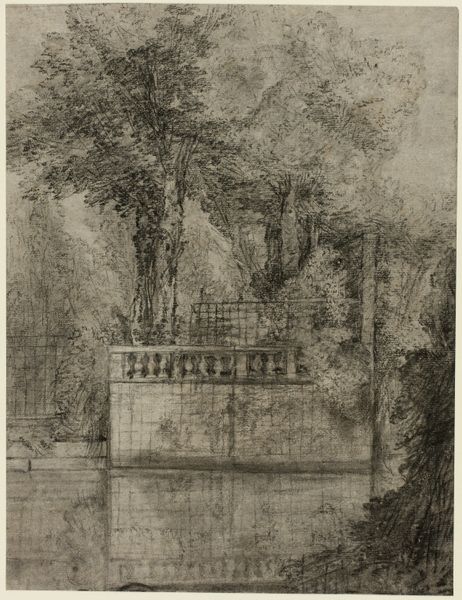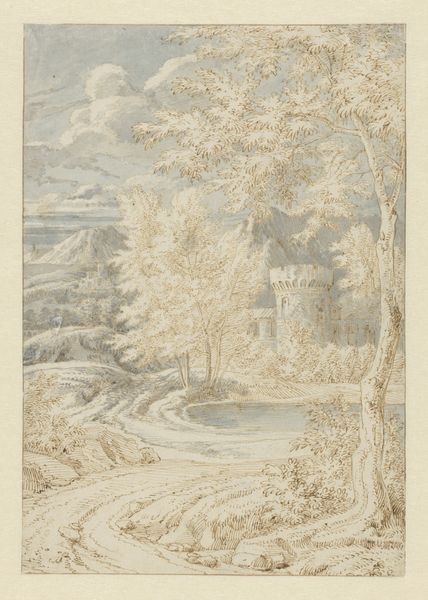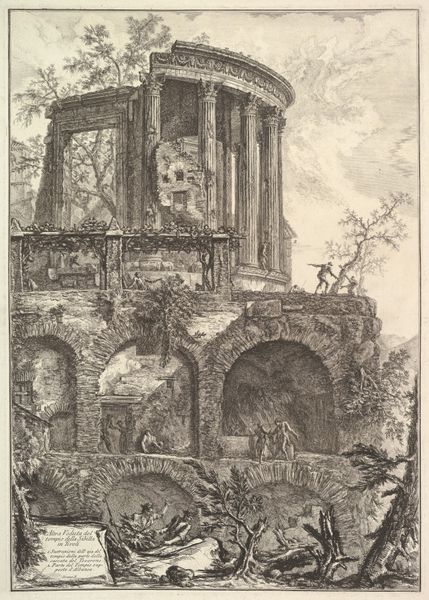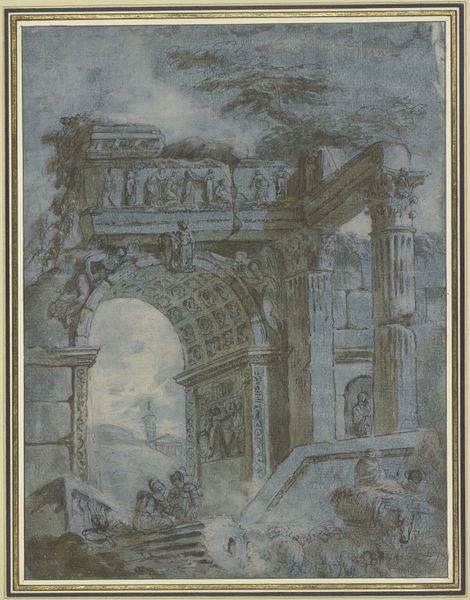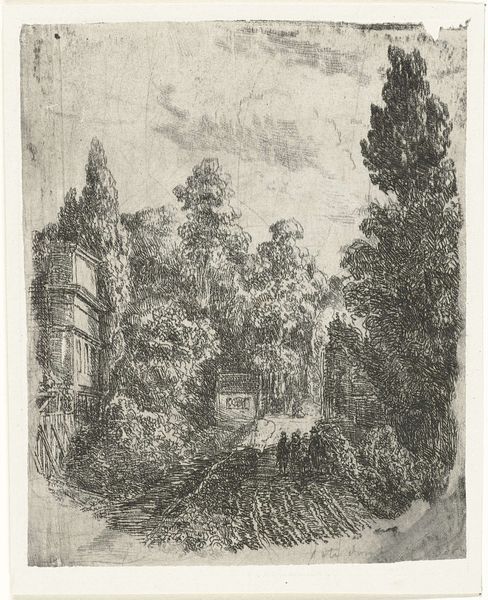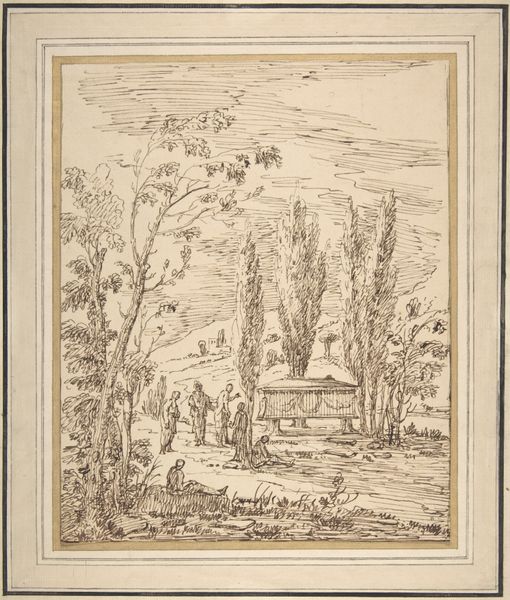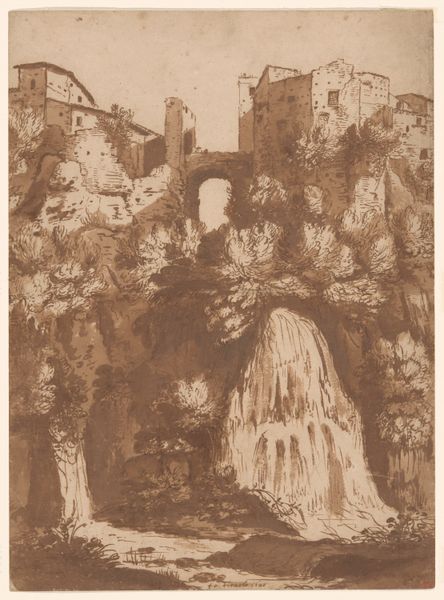
Architectural Fantasy of Roman Ruins with an Inscription Plaque c. 1768
0:00
0:00
drawing, pencil
#
drawing
#
landscape
#
pencil
#
history-painting
#
academic-art
Dimensions: sheet: 32.2 × 23 cm (12 11/16 × 9 1/16 in.)
Copyright: National Gallery of Art: CC0 1.0
Jean-Baptiste Lallemand created this drawing of Roman ruins with graphite, pen and brown ink, and gray wash on paper. Architectural fantasies like this were popular in the 18th century, reflecting the era's fascination with classical antiquity and the picturesque. Notice how Lallemand combines recognizable Roman architectural elements with imagined, theatrical settings. The ruined columns, overgrown vegetation, and inscription plaque evoke a sense of historical grandeur but also of decay and the transience of human achievement. This aesthetic of ruins appealed to the sensibilities of the time, highlighting the sublime power of nature over human constructions. The image reflects the influence of the Grand Tour, where wealthy Europeans, particularly the British, traveled to Italy to study classical art and architecture. Lallemand catered to this market, producing idealized and romanticized views of Roman ruins. Understanding this artwork requires knowledge of the social and cultural context of 18th-century Europe, the Grand Tour, and the era's fascination with classical antiquity. Art historians draw on travel accounts, architectural treatises, and social histories to fully understand the meaning and significance of artworks like this.
Comments
No comments
Be the first to comment and join the conversation on the ultimate creative platform.
